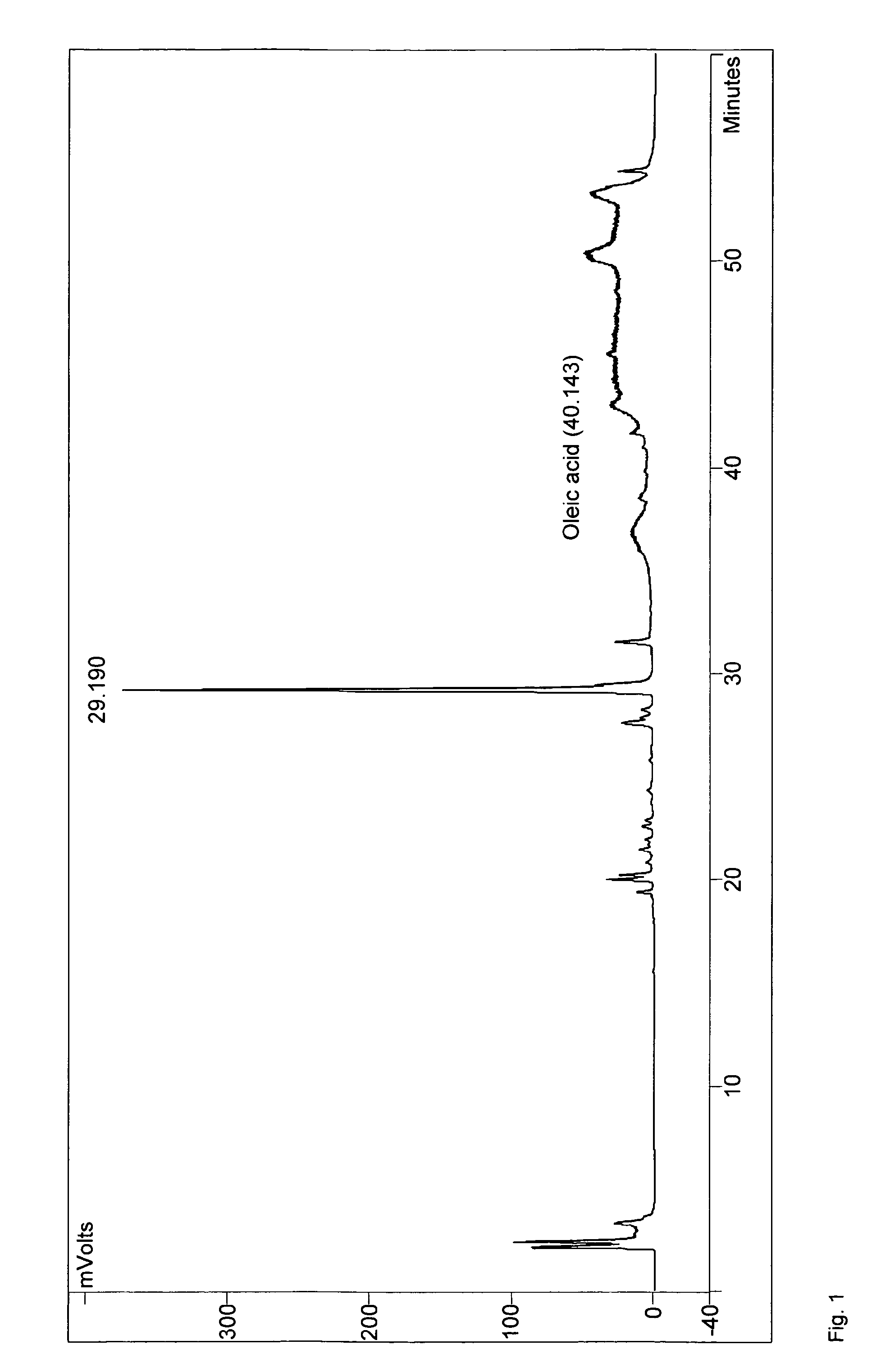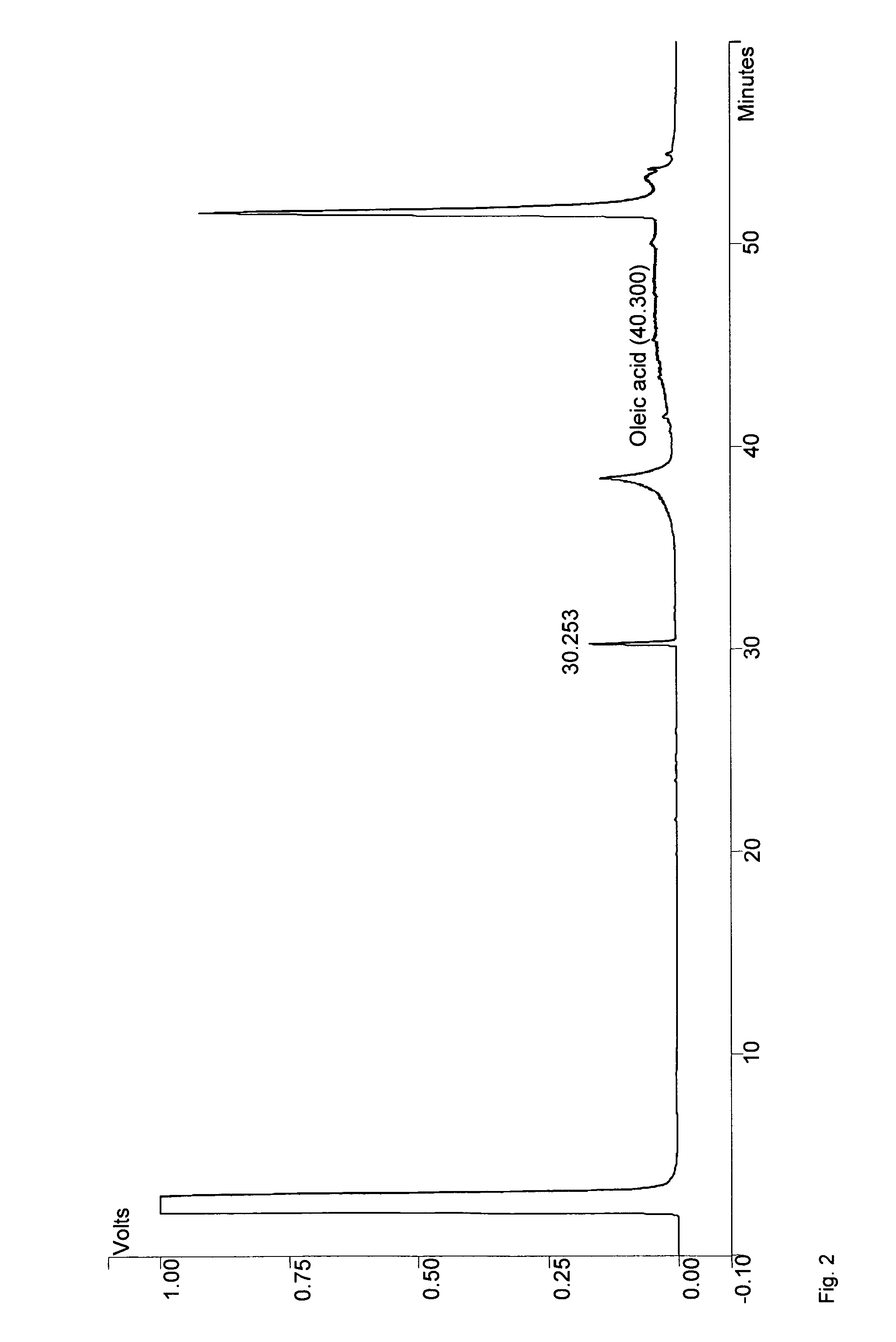Method for the production of medium-chain sophorolipids
a technology of sophorolipids and medium-chain sophorolipids, which is applied in the field of producing glycolipids, can solve the problems of unattractive process, important limitation of the applicability of 1-alcohols, and important limitation of the physical properties of sophorolipids,
- Summary
- Abstract
- Description
- Claims
- Application Information
AI Technical Summary
Benefits of technology
Problems solved by technology
Method used
Image
Examples
example 1
Strains, Plasmids and Culture Conditions—DNA Isolation and Sequencing
[0076]C. bombicola ATCC 22214 was used for the preparation of genomic DNA. Escherichia coli DH5α was used in all cloning experiments. C. bombicola was maintained on agar plates containing 10% glucose, 1% yeast extract and 0.1% urea. Yeast strains presumed to lack β-oxidation activity were tested for growth on Yeast Nitrogen base with Oleic acid (YNO) plates (0.67% yeast nitrogen base without amino acids, 0.02% Tween 40 and 0.1% oleic acid). Sophorolipid synthesis of yeast strains with a blocked β-oxidation activity was tested on medium as described by Lang et al. (2000) with either 1-dodecanol (Sigma) used as hydrophobic carbon source in a concentration of 20 or 5 g / L or rapeseed oil (Sigma) used at 37.5 g / L. The hydrophobic carbon source was added two days after inoculation and the cultures were incubated for another eight days, unless specified otherwise.
[0077]Liquid yeast cultures were incubated at 30° C. and 20...
example 2
Transformation
[0080]C. bombicola cells were transformed with the lithium acetate method (Gietz and Schiestl, 1995), but 50 mM LiAc was used instead of 100. Transformants were selected on synthetic dextrose (SD) plates (0.67% yeast nitrogen base without amino acids (DIFCO) and 2% glucose). E. coli cells were transformed as described by Sambrook and Russell (2001).
MFE-2 Sequence.
[0081]The nucleotide sequence of the MFE-2 gene of C. bombicola has been deposited at the GenBank nucleotide database under the accession number EU315245 and is given in enclosure 1.
[0082]
TABLE 2SEQ ID NONameFeatureSequenceSEQ IDMFE2_3545Forcloning5′-CTCCTAAGCATTTAACTGCCTTGAG-3′NO 4MFE2SEQ IDMFE2_3545Revcloning5′-AACCGAGATACGCCTAATCAGTC-3′NO 5MFE2SEQ IDURA3infMFE2Forligating5′-TGCGTTGCCCCTACACTGACGGGCGGATAGTACA-3′NO 6Ura3 intoMFE2SEQ IDURA3infMFE2Revligating5′-TGGTCTTCGCCCTCACATCATCGTCACTATACAC-3′NO 7Ura3 intoMFE2SEQ IDMFE2knock1000For4095 bp5′-GGCAACTTTGGCCAGGCCAATTA-3′NO 8knock-outfragmentSEQ IDMFE2knock1000...
PUM
| Property | Measurement | Unit |
|---|---|---|
| concentration | aaaaa | aaaaa |
| concentration | aaaaa | aaaaa |
| concentration | aaaaa | aaaaa |
Abstract
Description
Claims
Application Information
 Login to View More
Login to View More - R&D
- Intellectual Property
- Life Sciences
- Materials
- Tech Scout
- Unparalleled Data Quality
- Higher Quality Content
- 60% Fewer Hallucinations
Browse by: Latest US Patents, China's latest patents, Technical Efficacy Thesaurus, Application Domain, Technology Topic, Popular Technical Reports.
© 2025 PatSnap. All rights reserved.Legal|Privacy policy|Modern Slavery Act Transparency Statement|Sitemap|About US| Contact US: help@patsnap.com



